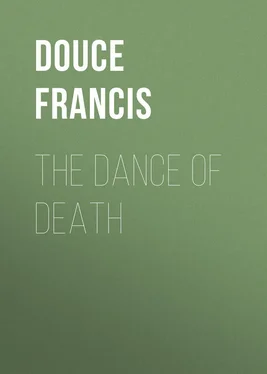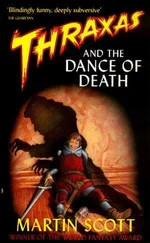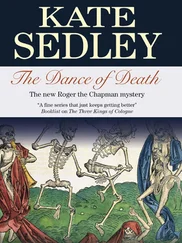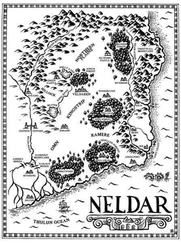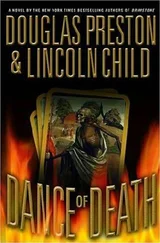Francis Douce - The Dance of Death
Здесь есть возможность читать онлайн «Francis Douce - The Dance of Death» — ознакомительный отрывок электронной книги совершенно бесплатно, а после прочтения отрывка купить полную версию. В некоторых случаях можно слушать аудио, скачать через торрент в формате fb2 и присутствует краткое содержание. Жанр: foreign_antique, foreign_prose, на английском языке. Описание произведения, (предисловие) а так же отзывы посетителей доступны на портале библиотеки ЛибКат.
- Название:The Dance of Death
- Автор:
- Жанр:
- Год:неизвестен
- ISBN:нет данных
- Рейтинг книги:5 / 5. Голосов: 1
-
Избранное:Добавить в избранное
- Отзывы:
-
Ваша оценка:
- 100
- 1
- 2
- 3
- 4
- 5
The Dance of Death: краткое содержание, описание и аннотация
Предлагаем к чтению аннотацию, описание, краткое содержание или предисловие (зависит от того, что написал сам автор книги «The Dance of Death»). Если вы не нашли необходимую информацию о книге — напишите в комментариях, мы постараемся отыскать её.
The Dance of Death — читать онлайн ознакомительный отрывок
Ниже представлен текст книги, разбитый по страницам. Система сохранения места последней прочитанной страницы, позволяет с удобством читать онлайн бесплатно книгу «The Dance of Death», без необходимости каждый раз заново искать на чём Вы остановились. Поставьте закладку, и сможете в любой момент перейти на страницу, на которой закончили чтение.
Интервал:
Закладка:
13. “La grant Danse Macabre des hommes et des femmes, &c. Imprimèe à Troyes par Nicolas Le Rouge demourant en la grant rue à l’enseigne de Venise auprès la belle croix.” No date, folio. With very clever wood-cuts, probably the same as in the edition of 1490; and if so, they differ much from the manner of Jollat, and have not his well-known mark.
14. “La grant Danse Macabre des hommes et des femmes, &c. Rouen, Guillaume de la Mare.” No date, 4to. with cuts, and in the Roman letter.
15. “La grande Danse Macabre des hommes et des femmes, ou est démonstré tous humains de tous estats estre du bransle de la Mort. Lyon, Olivier Arnoulet.” No date, 4to.
16. “La grant Danse Macabre des hommes et des femmes, &c. Lyon, Nourry, 1501,” 4to. cuts.
17. “La grant Danse Macabre des hommes et des femmes, &c. Imprimé à Genesve, 1503,” 4to. cuts.
18. “La grant Danse Macabre, &c. Paris, Nicole de la Barre, 1523,” 4to. with very indifferent cuts, and the omission of some of the characters in preceding editions. This has been privately reprinted, 1820, by Mr. Dobree, from a copy in the British Museum.
19. “La grant Danse Macabre des hommes et des femmes. Troyes, Le Rouge, 1531,” folio, cuts.
20. “La grand Danse Macabre des hommes et des femmes. Paris, Denys Janot. 1533,” 8vo. cuts.
21. “La grand Danse Macabre des hommes et des femmes, tant en Latin qu’en Francoys. Paris, par Estienne Groulleau libraire juré en la rue neuve Nostre Dame à l’enseigne S. Jean Baptiste.” No date, 16mo. cuts. The first edition of this size, and differing in some respects from the preceding.
22. “La grand Danse Macabre des hommes et des femmes, &c. Paris, Estienne Groulleau, 1550,” 16mo. cuts.
23. “La grande Danse des Morts, &c. Rouen, Morron.” No date, 8vo. cuts.
24. “Les lxviii huictains ci-devant appellés la Danse Machabrey, par lesquels les Chrestiens de tous estats tout stimulés et invités de penser à la mort. Paris, Jacques Varangue, 1589,” 8vo. In Roman letter, without cuts.
25. “La grande Danse Macabre des hommes et des femmes, &c. Troyes, Oudot,” 1641, 4to. cuts. One of the bibliothèque bleue books.
26. “La grande Danse Macabre des hommes et des femmes, renouvellée de vieux Gaulois en langage le plus poli de notre temps, &c. Troyes, Pierre Garnier rue du Temple.” No date, but the privilege is in 1728, 4to. cuts. The polished language is, of course, for the worse, and Macaber is called “des Machabées,” no doubt, the editor’s improvement.
27. “La grande Danse Macabre des hommes et des femmes, renouvellée, &c. Troyes, chez la veuve Oudot, et Jean Oudot fils, rue du Temple, 1729,” 4to. cuts. Nearly the same as No. 25.
These inferior editions continued, till very lately, to be occasionally reprinted for the use of the common people, and at the trifling expense of a very few sous. They are, nevertheless, of some value to those who feel interested in the subject, as containing tolerable copies of all the fine cuts in the preceding edition, No. 11.
Dr. Dibdin saw in the public library at Munich a very old series of a Macaber Dance, that had been inserted, by way of illustration, into a German manuscript of the Dance of Death. Of these he has given two subjects in his “Bibliographical Tour,” vol. iii. p. 278.
But it was not only in the above volumes that the very popular subject of the Macaber Dance was particularly exhibited. It found its way into many of the beautiful service books, usually denominated Horæ, or hours of the Virgin. These principally belong to France, and their margins are frequently decorated with the above Dance, with occasional variety of design. In most of them Death is accompanied with a single figure only, characters from both sexes being introduced. It would be impossible to furnish a complete list of them; but it is presumed that the mention of several, and of the printers who introduced them, will not be unacceptable.
No. I. “Las Horas de nuestra Senora con muchos otros oficios y oraçiones.” Printed in Paris by Nicolas Higman for Simon Vostre, 1495, 8vo. It has two Dances of Death, the first of which is the usual Macaber Dance, with the following figures: “Le Pape, l’Empereur, le Cardinal, l’Archevesque, le Chevalier, l’Evesque, l’Escuyer, l’Abè, le Prevost, le Roy, le Patriarche, le Connestable, l’Astrologien, le Bourgoys, le Chanoine, le Moyne, l’Usurier, le Medesin, l’Amoureux, l’Advocat, le Menestrier, le Marchant, le Chartreux, le Sergent, le Cure, le Laboureur, le Cordelier.” Then the women: “La Royne, la Duchesse, la Regente, la Chevaliere, l’Abbesse, la Femme descine, la Prieure, la Damoissele, la Bourgoise, la Cordeliere, la Femme daceul, la Nourice, la Theologienne, la nouvelle mariee, la Femme grosse, la Veufve, la Marchande, la Ballive, la Chamberiere, la Recommanderese, la vielle Damoise, l’Espousée, la Mignote, la Fille pucelle, la Garde d’accouchée, la jeune fille, la Religieuse, la Vielle, la Revenderesse, l’Amoureuse, la Sorciere, la Bigote, la Sote, la Bergere, la Femme aux Potences, la Femme de Village; to which are added, l’Enfant, le Clerc, l’Ermite.”
The second Dance of Death is very different from the preceding, and consists of groupes of figures. The subjects, which have never yet been described, are the following:
1. Death sitting on a coffin in a church-yard. “Discite vos choream cuncti qui cernitis istam.”
2. Death with Adam and Eve in Paradise. He draws Adam towards him. “Quid tum prosit honor glorie divitie.”
3. Death helping Cain to slay Abel. “Esto meorum qui pulvis eris et vermibus esca.”
4. Death holding by the garment a cardinal, followed by several persons. “In gelida putrens quando jacebis humo.”
5. Death mounted on a bull strikes three persons with his dart. “Vado mori dives auro vel copia rerum.”
6. Death seizing a man sitting at a table with a purse in his hand, and accompanied by two other persons. “Nullum respectum dat michi, vado mori.”
7. An armed knight killing an unarmed man, Death assisting. “Fortium virorum est magis mortem contemnere vitam odisse.”
8. Death with a rod in his hand, standing upon a groupe of dead persons. “Stultum est timere quod vitari non potest.”
9. Death with a scythe, having mowed down several persons lying on the ground. “Est commune mori mors nulli parcit honori.”
10. A soldier introducing a woman to another man, who holds a scythe in his hand. Death stands behind. “Mors fera mors nequam mors nulli parcit et equam.”
11. Death strikes with his dart a prostrate female, who is attended by two others. “Hec tua vita brevis: que te delectat ubique.”
12. A man falling from a tower into the water. Death strikes him at the same time with his dart. “Est velut aura levis te mors expectat ubique.”
13. A man strangling another, Death assisting. “Vita quid est hominis nisi res vallata ruinis.”
14. A man at the gallows, Death standing by. “Est caro nostra cinis modo principium modo finis.”
15. A man about to be beheaded, Death assisting. “Quid sublime genus quid opes quid gloria prestant.”
16. A king attended by several persons is struck by Death with his dart. “Quid mihi nunc aderant hec mihi nunc abeunt.”
17. Two soldiers armed with battle-axes. Death pierces one of them with his dart. “Ortus cuncta suos: repetunt matremque requirunt.”
18. Death strikes with his dart a woman lying in bed. “Et redit in nihilum quod fuit ante nihil.”
19. Death aims his dart at a sleeping child in a cradle, two other figures attending. “A, a, a, vado mori, nil valet ipsa juventus.”
20. A man on the ground in a fit, Death seizes him. Others attending. “Mors scita sed dubia nec fugienda venit.”
Читать дальшеИнтервал:
Закладка:
Похожие книги на «The Dance of Death»
Представляем Вашему вниманию похожие книги на «The Dance of Death» списком для выбора. Мы отобрали схожую по названию и смыслу литературу в надежде предоставить читателям больше вариантов отыскать новые, интересные, ещё непрочитанные произведения.
Обсуждение, отзывы о книге «The Dance of Death» и просто собственные мнения читателей. Оставьте ваши комментарии, напишите, что Вы думаете о произведении, его смысле или главных героях. Укажите что конкретно понравилось, а что нет, и почему Вы так считаете.
